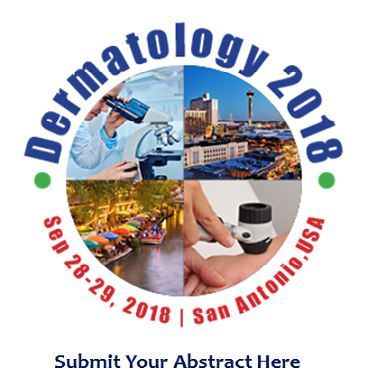
Dr. Prachi Chetankumar Gajjar
Government medical college, Bhavnagar, India
Title: “ Dermoscopy of congenital dermatoses in pediatric age group- An observational studyâ€
Biography
Biography: Dr. Prachi Chetankumar Gajjar
Abstract
Statement of the Problem: Dermoscopy is an ex-vivo noninvasive technique for analysing subsurface skin structures. Pediatric population attends the dermatology OPD in large proportion. Sometimes, routine examination and procedures becomes difficult in children as they are uncooperative. So dermoscopy provides a useful diagnostic clue to ease our routine practice. Objective of our study is to determine the dermoscopic features of various congenital dermatoses in pediatric age group.
Methodology & Theoretical Orientation: 149 children with congenital dermatoses were enrolled in a study conducted between August 2017 to January 2018 in dermatology OPD. After proper history and examination, gross and dermsocopic (DS) images were captured using Dermlite DL IV after written informed consent from guardian. Data were expressed in frequency and percentage.
Findings: 149 DS images of 22 congenital dermatoses were studied including 80 males and 69 females. Homogenous pattern (80%) was the most common pattern observed in melanocytic nevus (26). Mongolion spots (25) had greenish hue (100%) on dermoscopy. Hemangioma (13) and portwine stains (5) showed cherry red vacuoles and red dots on a pink background respectively. Criss cross, rhomboid and lamellated pattern of scales were observed in congenital icthyosis (8).Dermoscopy of adenoma sebaceum in Tuberous sclerosis(5) exhibited yellowish globules of varying size while that of reactive perforating
dermatoses showed classic ‘Three zones’. We also analysed dermoscopy of congenital bullous and few rare miscellaneous conditions. Trichoscopy of short anagen syndrome and monilethrix revealed tipped points and beaded hair shafts respectively.
Conclusion & Significance: Dermoscopy is a noninvasive diagnostic tool which enables visualisation of deeper structures of skin which are invisible with naked eyes. Melanocytic nevus if disorganised indicates increased risk for melanoma in situ. Dermoscopy of vascular structures helps to determine the level of vessel dilatation. We observed classic “Hypopyon” in lymphangioma circumscriptum. Dermoscopy of hair disorders helps in differentiating from other hairs shaft disorders. Few drawbacks of our study are our inability to take histopathology in all children due to lack of consent from parents.

